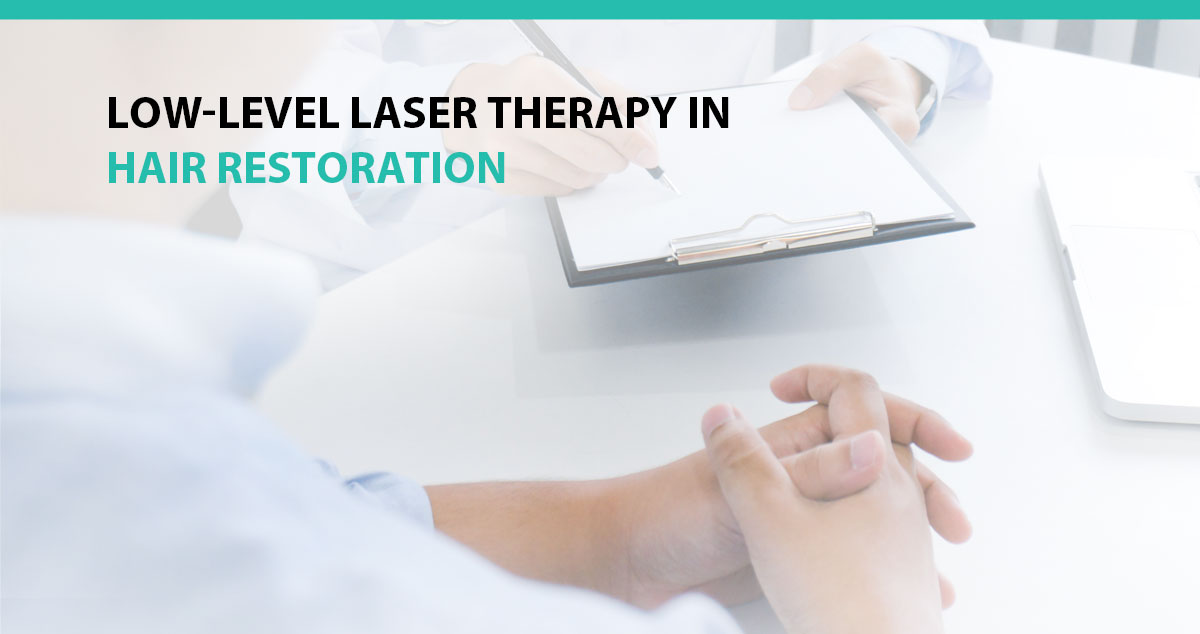
Lasers have long been associated with medical advances. Most commonly, perhaps, is laser eye surgeries such as LASIK, where a laser is used to correct vision. However, laser therapy has been around for much longer than that!
Low-Level Laser Therapy (LLLT) in particular was discovered to help in the regrowth of hair completely by accident. In the 1960s, Dr. Endre Mester was experimenting on mice to see if exposure to low levels of laser light would cause cancer.
In the process of the experiment, he had shaved the mice in order to have a direct beam to the skin. To his surprise, the mice did not develop cancer at all, but the areas that had been affected by LLLT were hyper-stimulated to grow new hair. The development of the procedure stemmed from that moment, and in 2007 was officially endorsed by the FDA as a hair restoration treatment.
Benefits of Low-Level Laser Therapy
LLLT has many benefits for those who are suitable candidates to use it for their hair restoration.
The main benefit of LLLT is that it is non-invasive. This means that, unlike other common hair restoration treatments, it does not require a surgeon to pierce the skin on your scalp. On top of that, there is almost no chance of scarring for most people, and no marks or scars as part of the process of treatment.
Not having to worry about scarring is an amazing benefit, but many people are more afraid of the pain from a surgical procedure. Although procedures like Follicular Unit Excision (FUE) and Follicular Unit Transplantation (FUT) tend to have very low instances of pain, LLLT generally has no pain whatsoever.
LLLT also has a strong track record as a preventative measure against hair loss from Male Pattern Hair Loss (MPHL) once it is identified and treatment is applied. This is because LLLT stimulates the growth of the existing hair follicles, including those that are in decline. When this happens, it can often slow down or prevent further hair loss.
Potential Drawbacks of Low-Level Laser Therapy
Since LLLT has so many benefits, it’s important to note that there are some potential drawbacks as well.
For most patients, LLLT will have no drawbacks to the treatment itself. However, every person is different, so it is important to meet with a hair restoration specialist to determine what kinds of treatment options are right for you.
For patients who undergo LLLT, a very small percentage of them have reported slight headaches, some mild itchiness, and a burning sensation that lasts for a brief time after the procedure. However, long-term effects are extremely rare for most patients.
Drawbacks to the procedure as a whole, however, are present and should be considered when looking for treatment options for your MPHL.
The biggest drawback is that many people will have to undergo several treatment sessions in order to achieve the fullest benefit. This could range from 6 to 12, but might be more or less depending on your unique circumstances.
Another drawback is that LLLT is not right for everyone. If you are already experiencing advanced MPHL, for example, the hair follicles on your scalp might already be beyond the ability to treat with laser therapy. However, this is a reminder that it is important to start looking at treatment options as soon as you think you have signs of hair loss or baldness.
Is Low-Level Laser Therapy Right For Me?
As with all hair restoration procedures, it is essential to talk to a licensed specialist about your potential treatment options. If caught early enough, your hair loss might be treatable with LLLT, but it is also possible that LLLT might just hold off future hair loss for several years until such time as it becomes necessary to proceed with FUT or FUE instead.
Las Vegas happens to be the home of one of the nation’s leading hair restoration specialists, Dr. Joseph Williams. So if you are in Southern Nevada and want to meet with someone you can trust to guide you to the best treatment, schedule a consultation to begin your hair restoration journey today.










